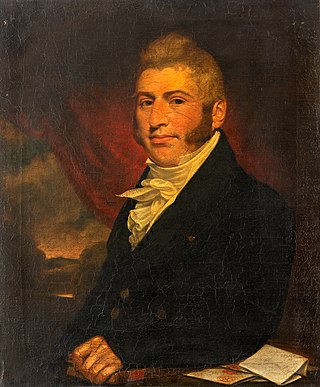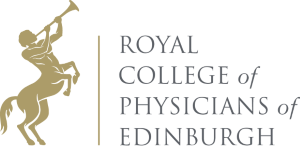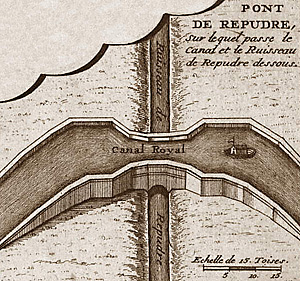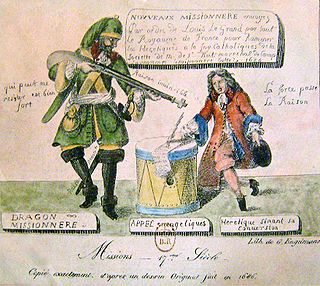Related Research Articles

John Abercrombie was a Scottish physician, author, philosopher and philanthropist. His Edinburgh practice became one of the most successful medical practices in Scotland. The Chambers Biographical Dictionary says of him that after James Gregory's death, he was "recognized as the first consulting physician in Scotland". As surgeon to The Royal Public Dispensary and the New Town Dispensary he provided free medical care for the poor of the town and taught medical students and apprentices. He published extensively on medical topics and latterly on metaphysics morality and religion. A devout Christian, he gave financial support to missionary work. Abercrombie was awarded the honorary degree of MD from the University of Oxford, was elected Rector of Marischal College and University, Aberdeen and appointed Physician to the King in Scotland.

1681 (MDCLXXXI) was a common year starting on Wednesday of the Gregorian calendar and a common year starting on Saturday of the Julian calendar, the 1681st year of the Common Era (CE) and Anno Domini (AD) designations, the 681st year of the 2nd millennium, the 81st year of the 17th century, and the 2nd year of the 1680s decade. As of the start of 1681, the Gregorian calendar was 10 days ahead of the Julian calendar, which remained in localized use until 1923.

The Canal du Midi is a 240 km (150 mi) long canal in Southern France. Originally named the Canal Royal en Languedoc and renamed by French revolutionaries to Canal du Midi in 1789, the canal is considered one of the greatest construction works of the 17th century.
Fouquet or Foucquet is a French surname. Many immigrants to the United States anglicized this surname to either Fuqua or Fuquay upon arrival.
The year 1795 in science and technology involved some significant events.

Pierre-Paul Riquet, Baron de Bonrepos was the engineer and canal-builder responsible for the construction of the Canal du Midi.
The year 1679 in science and technology involved some significant events.

Castelnaudary is a commune in the Aude department in the Occitanie region of southern France. It is located in the former province of the Lauragais and famous for cassoulet of which it claims to be the world capital, and of which it is a major producer.

The Royal College of Physicians of Edinburgh (RCPE) is a medical royal college in Scotland. It is one of three organisations that sets the specialty training standards for physicians in the United Kingdom. It was established by royal charter in 1681. The college has over 14,000 fellows and members worldwide, who are given the honor of using the post-nominal FRCPE, F.R.C.P.E, or F.R.C.P.(Edin).

The Garonne Canal or Canal de Garonne is a French canal dating from the mid-19th century that connects Toulouse to Castets-en-Dorthe. The remainder of the route to Bordeaux uses the river Garonne. It is the continuation of the Canal du Midi which connects the Mediterranean with Toulouse.

The Grand Bassin is the largest body of open water along the Canal du Midi. It is in Castelnaudary, France and covers some 7 hectares. Once a scene of intense economic activity, it is now a major pleasure port used by tourist craft. It holds the water reserve for the four locks of Saint-Roche.

There are 91 working locks on the Canal du Midi along its 240-kilometre (150 mi) course from the Bassin du Thau on the Mediterranean coast to the junction with the Canal lateral a la Garonne in Toulouse. There are a further 13 locks on the 37-kilometre (23 mi) La Nouvelle branch which runs through Narbonne to the Mediterranean at Port-la-Nouvelle. The locks are all under the management of the French navigation authority, Voies navigables de France.

The La Nouvelle branch is a 37.3-kilometre (23.2 mi) branch of the Canal du Midi in Aude, southern France which runs from the Canal du Midi through Narbonne and on to the Mediterranean. It is made up of three waterways: the first 5.1 kilometres (3.2 mi) is the Canal de Jonction from the Canal du Midi to the Aude, the second section is 800 metres (2,625 ft) of the Aude itself and the third is the 31.6 kilometres (19.6 mi) Canal de la Robine which enters the Mediterranean at Port-la-Nouvelle. The La Nouvelle branch is designated a UNESCO World Heritage Site as part of the Canal du Midi and is managed by the French navigation authority, Voies navigables de France.

The Répudre Aqueduct is the first aqueduct built on the Canal du Midi. Pierre-Paul Riquet designed it to cross the Répudre River. It was built by Emmanuel d'Estan. It was designed in 1675 and completed in 1676, but was severely damaged that winter and had to be rebuilt. It is one of three original aqueducts created by Pierre-Paul Riquet during the building of the canal from 1667 to 1681.
The Aiguille Aqueduct is one of several aqueducts on the Canal du Midi. In Puichéric France, it carries the canal over a small stream, the Rigole de l'Etang. It is one of three original aqueducts created by Pierre-Paul Riquet during the building of the canal from 1667 to 1681.
The Jouarres Aqueduct is one of several aqueducts on the Canal du Midi. In Jouarres le Vieux France, it carries the canal over a small stream. It is one of three original aqueducts created by Pierre-Paul Riquet during the building of the canal from 1667 to 1681.
Marie François Fouquet (1590–1681), was a French medical writer and philanthropist.
Sir Thomas Burnet (1638–1704) was a Scottish physician, known for his appointment to successive British monarchs, and as an author in the tradition of Early Modern learned medicine.

Events from the year 1681 in France.
Events from the year 1681 in the Kingdom of Scotland.
References
- ↑ Girdwood, Ronald H. (1981-09-05). "Three hundred years of the Royal College of Physicians of Edinburgh". British Medical Journal (Clinical Research Edition) . 283 (6292): 651–654. doi:10.1136/bmj.283.6292.651. PMC 1506788 . PMID 6790117.
- ↑ In his Opera Omnia Medico-Physica, published at The Hague, the 2nd edition of his Tractatus Quinque.
- ↑ Rolt, L. T. C. (1973). From Sea to Sea: An Illustrated History of the Canal du Midi. London: Allen Lane. ISBN 0713904712.
- ↑ Dickinson, H. W. (1970). Sir Samuel Morland: diplomat and inventor 1625-1695 . Cambridge: Heffer for the Newcomen Society. ISBN 0-85270-061-X.
- ↑ "corkscrew". The Oxford Companion to Wine. Archived from the original on 2009-02-27. Retrieved 2008-11-26– via winepros.com.au.
- ↑ Bolton, H. E. (1919). Kino's Historical Memoir of the Pimería Alta. Cleveland, Ohio: Arthur H. Clark.
- ↑ "Madame François Fouquet (1590-1681)". data.bnf.fr. Archived from the original on 25 July 2019. Retrieved 3 April 2018.